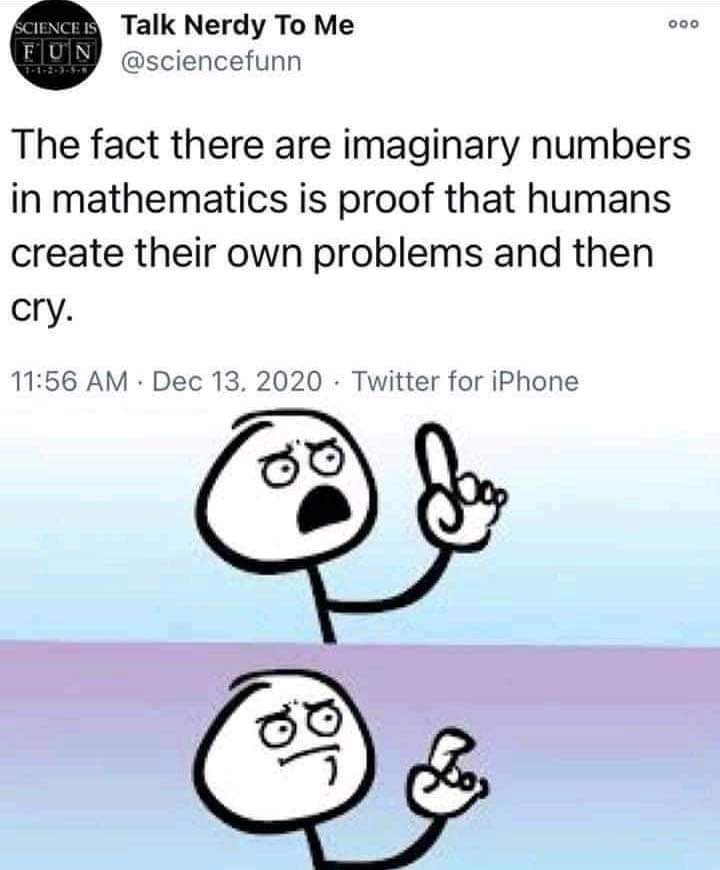Well actually it’s the other way around. The reason imaginary numbers were invented was to solve a problem we’d been crying over for centuries.
Then, as in most cases, solving one problem opens the door to millions of other problems like why in the fuck does the universe use these imaginary numbers we made up to solve cube roots?
Why is i a core part of the unit circle with like e^i*pi^ ? “Oh that’s because i is just perpendicular to the real number line” ?! Say that sentence again, how the fuck did we go from throwing sharp sticks to utterly deranged sentences like that? More importantly why do utterly deranged sentences like that accurately describe our universe and what is the next ludicrous math concept we’re going to discover is integral to the function of the universe?

